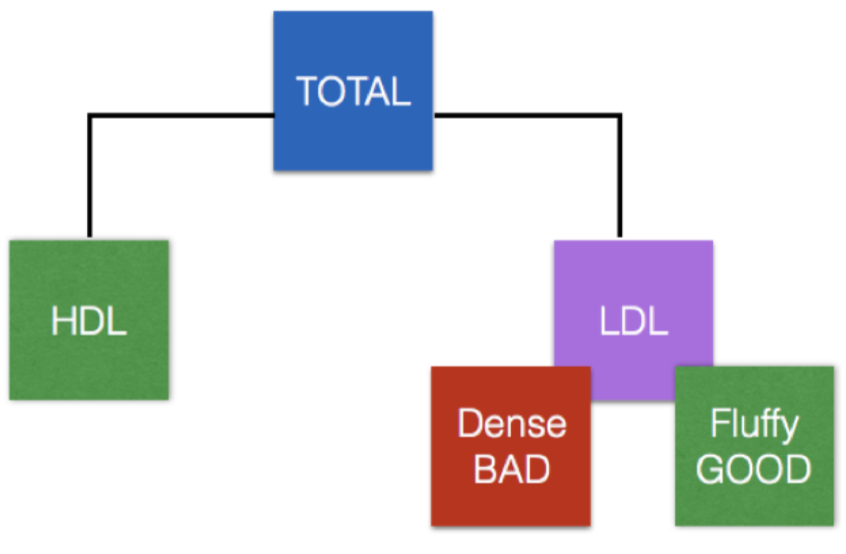Cholesterol
Most of our body’s cholesterol is made by the liver and other organs such as the intestinal cells, adrenal glands and reproductive organs. Dietary sources of cholesterol are in a form that is not easily absorbed.
Cholesterol is transported in the blood bound to special proteins called lipoproteins. These lipoproteins have different densities: Very low density lipoprotein (VLDL), Low density lipoprotein (LDL) and High density lipoprotein (HDL).
Abnormally high cholesterol values have been linked to higher levels of cardiovascular diseases (CVD) such as heart attacks and strokes. When you have a cholesterol blood test, the results are often reported with the following parameters:
- Total cholesterol
- HDL the so called ‘good’ cholesterol
- LDL the so called ‘bad’ cholesterol
- Triglycerides (TG), or ‘ugly’ cholesterol (my term)
Your doctor may focus on the first three and ignore the TG unless the level is very high. The problem with this approach is that the TG level gives a more accurate idea of risk of CVD than does the LDL. Studies completed over two decades ago showed that a better idea of risk of CVD is gained when we look at the TG/HDL ratio. This ratio is better than ratios containing the LDL, partly because the LDL can be made up of both ‘good’ (light and fluffy) and ‘bad’ (small and dense) particles and just looking at the overall level of LDL doesn’t tell you which type you have. This also means that we shouldn’t really refer to LDL cholesterol as the ‘bad’ type of cholesterol because it actually contains both ‘good’ and ‘bad’ particles.

An LDL level over 3 mmol/l is usually considered to be high. Your doctor will not consider the TG level to be abnormal unless it is over 2 mmol/l. However, by the time it is this high, much inflammatory damage is likely to have occurred. It is better to get your health on track before it reaches this level. It is therefore a good idea to keep the TG level under 1 mmol/l. If you want to work out your TG/HDL ratio, you will need to do a little maths. First take the TG level and multiply by 88.57. Then take the HDL level and multiply by 38.67.
The next logical question is, ‘Where do we get a raised TG from?'. A very small minority of people will have a genetic defect that will give them raised TG levels. For the rest of us, eating food containing refined sugars, particularly fructose, will increase TG levels. Fructose is naturally present in fruit. However, because it is naturally occurring doesn’t make it automatically good for us. Many of our fruit is bred so that it contains high sugar levels.
When we whizz the fruit up to make fruit juice or a smoothy, we concentrate the fructose even more. Fructose is highly reactive (inflammatory) in the body and hence should be taken in small quantities only. Tart or non-sweet fruit has lower fructose content. Processed foods including cakes, biscuits and cereals are likely to contain higher levels of fructose than home-made varieties.

Cholesterol:
- Forms 25% of brain mass
- Is a component of cell membranes and nerve sheaths
- Is used to make bile that help in digestion of foods and detoxification of toxic substances
- Is used to make steroid hormones including oestrogen and testosterone
Conclusion
- Look at the TG level when analysing your cholesterol - pay attention if the TG level is over one mmol/l.
- Eat less fructose to keep TG levels down.
- Exercise and fish oil supplements will help maintain a good HDL profile.
